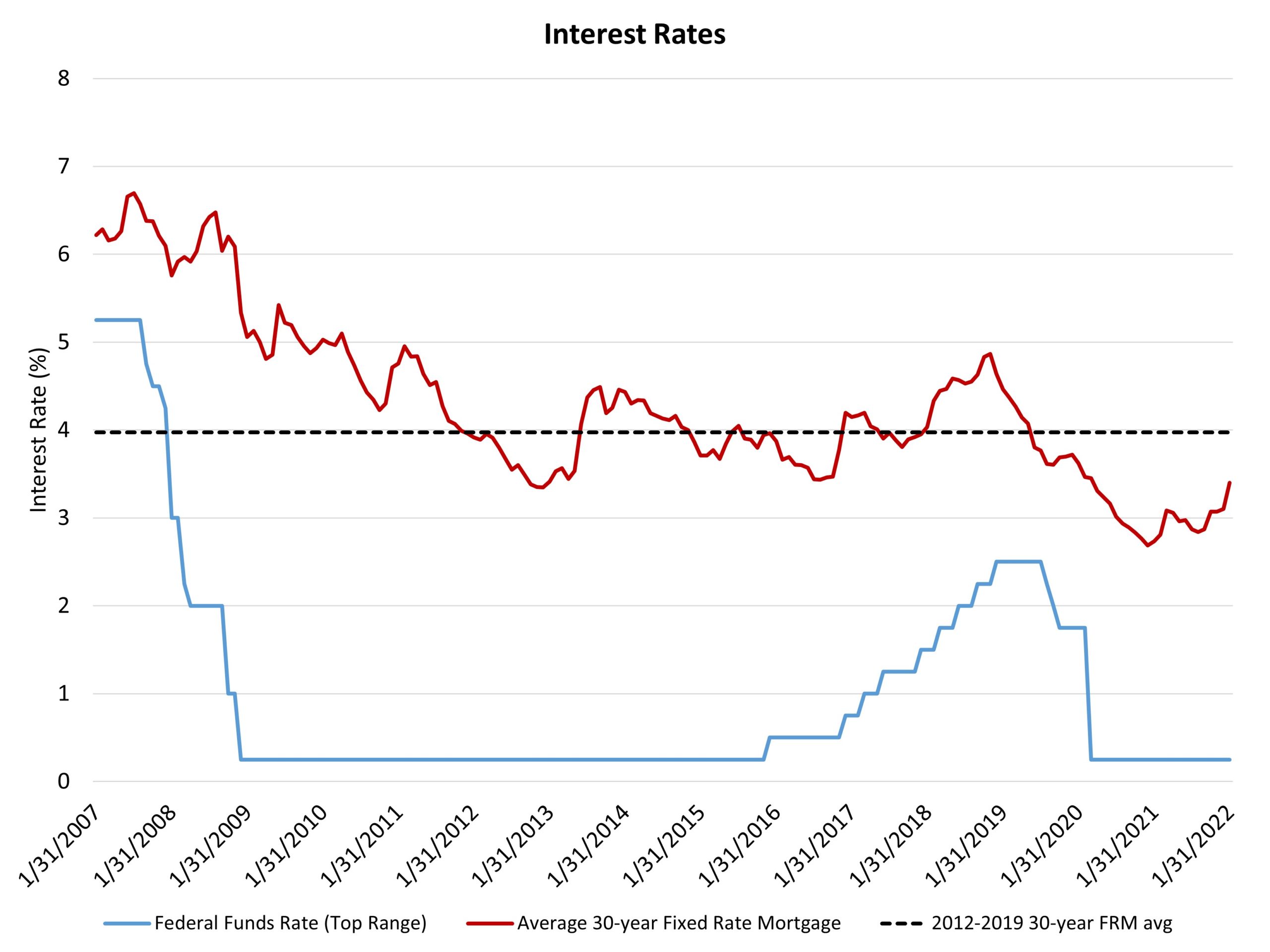At the conclusion of its January policy meeting, the Federal Open Market Committee strongly signaled that it will undertake its first, post-covid increase of the federal funds rate in March. The Fed is tightening monetary policy in response to the highest inflation readings in nearly 40 years. These inflationary pressures have increased both consumer costs and businesses input costs, including those faced by the residential construction sector.
Today’s policy announcement noted clearly:
With inflation well above 2 percent and a strong labor market, the Committee expects it will soon be appropriate to raise the target range for the federal funds rate.
Housing market stakeholders should be prepared for four 25 basis point federal funds rate increases over the course of 2022. It is possible that the first rate hike could be larger than 25 basis points, given the current overshoot of inflation. However, while possible, this seems less likely than not given the more preferred, orderly approach the Fed has been telegraphing for moving from accommodative monetary policy to tighter, anti-inflationary policy.
Additionally, the Fed will reverse course from quantitative easing to balance sheet reduction. The Fed’s announcement today indicates that bond purchases, including mortgage-backed securities, will end in March. Balance sheet reduction should begin after the first rate hike, perhaps late Summer or early Fall. How large this balance sheet reduction will be is uncertain. The Fed currently holds approximately $9 trillion in financial assets, the previous purchase of which has held long-term interest rates lower than they otherwise would have been.

It is important to note that there is not a direct connection between federal fund rate hikes and changes in long-term interest rates. Indeed, during the last tightening cycle, the federal funds target rate increased from November 2015 (with a top rate of just 0.25%) to November 2018 (2.5%), a 225 basis point expansion. However, during this time mortgage interest rates increased by a proportionately smaller amount, rising from approximately 3.9% to just under 4.9%.
Nonetheless, the ongoing policy pivot will yield successively higher interest rates in 2022 due to tighter monetary policy. This change will reduce housing affordability and again emphasizes the need for policymakers to enact solutions to fix the nation’s supply-chains. With respect to this item, a contrarian take on monetary policy would point out that higher interest rates will not solve ongoing production and logistical challenges for supply-chains. In fact, higher rates could make them worse and continue to yield higher costs for the economy. Thus, monetary policy is not the only way to fight inflation.
Discover more from Eye On Housing
Subscribe to get the latest posts sent to your email.
